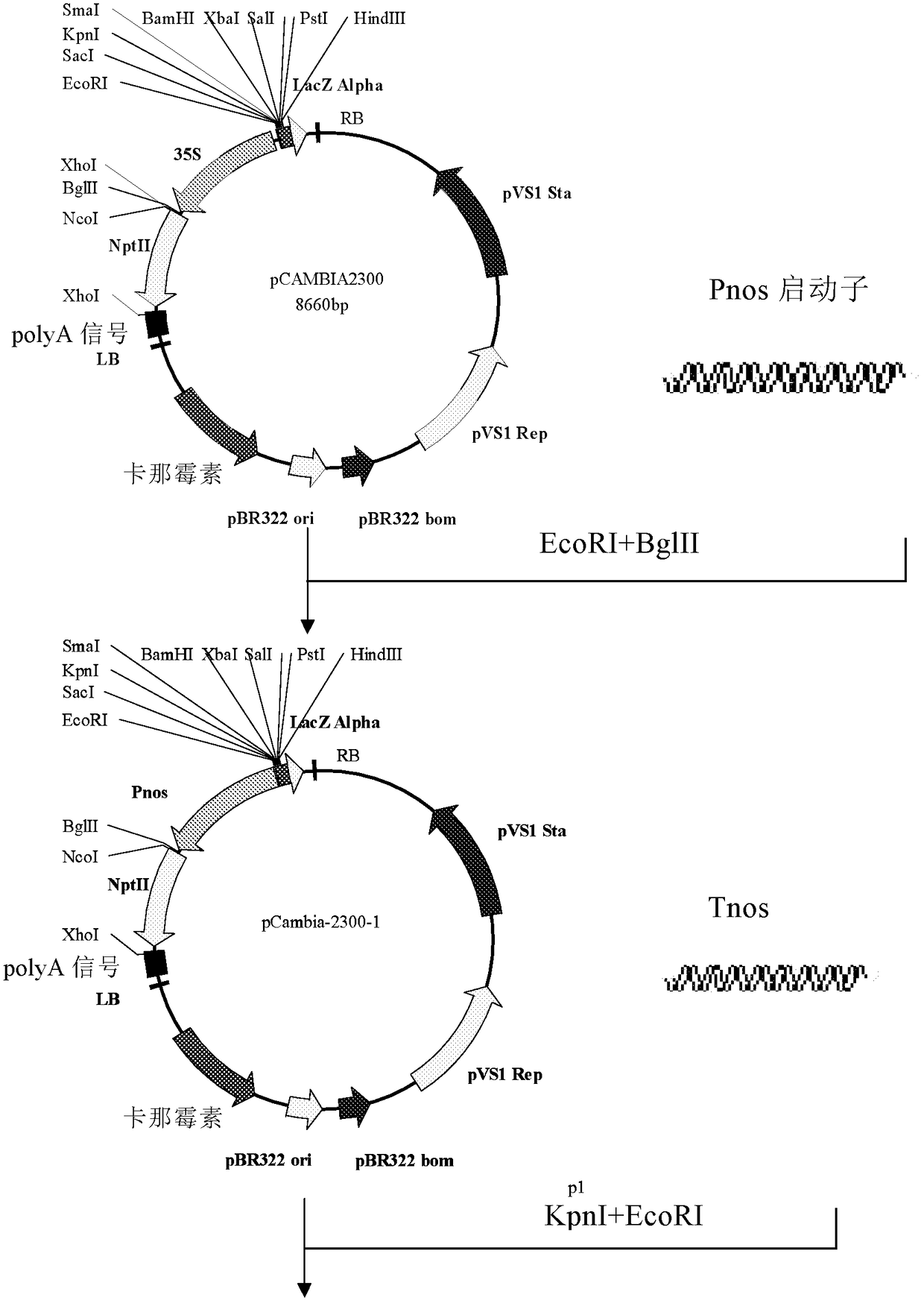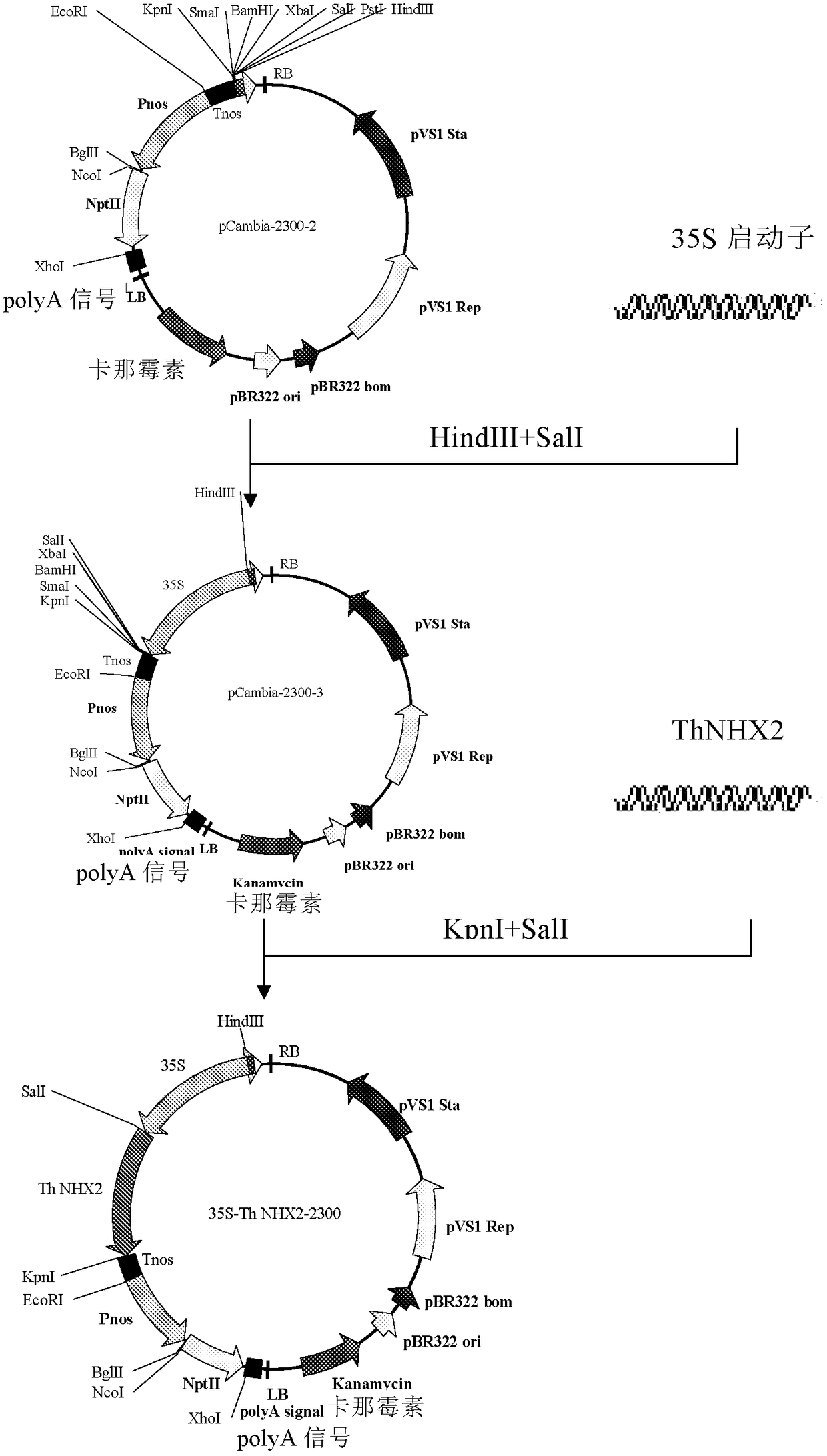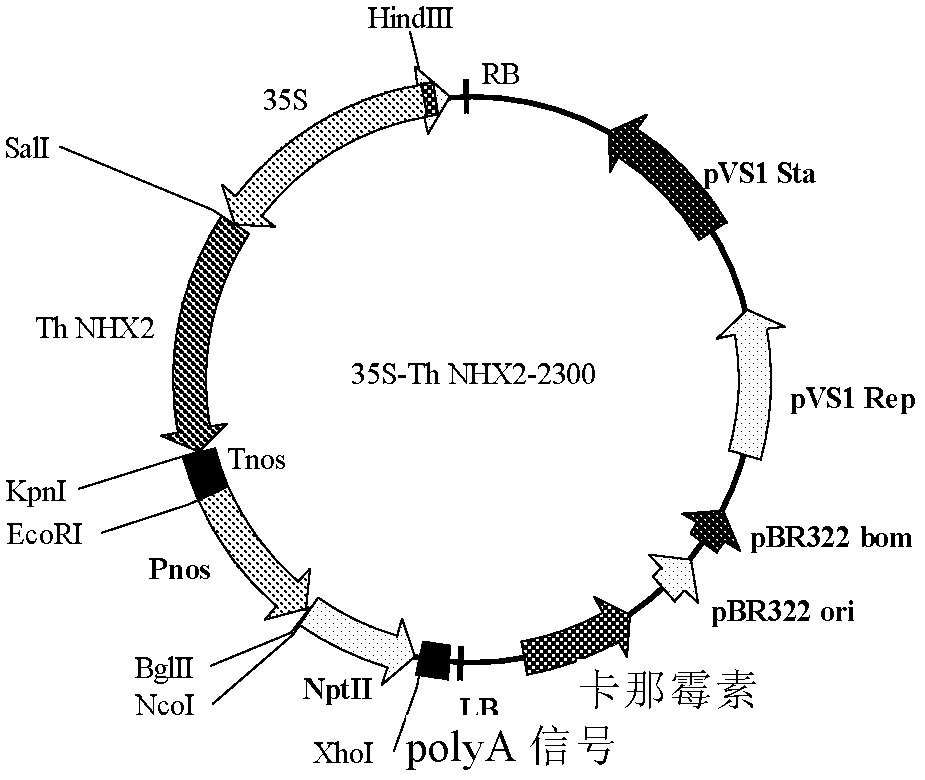A sodium-hydrogen antiporter protein nhx2 in the tonoplast membrane of Saltina japonicus and its coding gene and application
An antiporter and tonoplast technology, applied in the field of plant proteins and their encoding genes and applications, can solve problems such as complex mechanisms and important issues of plant salt resistance yet to be explored.
- Summary
- Abstract
- Description
- Claims
- Application Information
AI Technical Summary
Problems solved by technology
Method used
Image
Examples
Embodiment 1
[0019] Example 1. Construction of the SSH library of Salt mustard under salt stress:
[0020] The specific method is:
[0021] According to PCR-select of Clontech TM The method shown in the instructions of the cDNA Subtraction Kit kit uses the suppression subtractive hybridization method to construct an SSH library (subtractive library). During the experiment, the mRNA extracted from the salt-treated salt mustard tissue was used as the sample (Tester), and the mRNA extracted from the untreated salt mustard tissue was used as the control (Driver). Specific steps are as follows:
[0022] (1) Test materials:
[0023] Small salt mustard (Thellungiella halophila, purchased from the Halophyte Breeding Center of Ulanbuhe Desert Green Botanical Garden, Bayannur City, Inner Mongolia, China) was sown on sterilized vermiculite, at 22℃, photoperiod 12 hours light / 12 hours dark ( Culture under the condition of light intensity 3000-4000Lx), pour 1 / 2MS medium (containing 9.39mM KNO 3 , 0.625mMK...
Embodiment 2
[0034] Example 2 Cloning of tonoplast sodium hydrogen antiporter gene ThNHX2
[0035] After removing the redundant DNA of the clone from the colony Th-S312 in the identified salt mustard SSH library, the sequence is SEQ ID No: 3. Sequence analysis shows that the protein encoded by the sequence belongs to the vacuolar membrane sodium hydrogen antiporter . In this paper, the full-length coding gene corresponding to the SEQ ID No: 3 sequence is named ThNHX2, and its corresponding protein is named NHX2.
[0036] SEQ ID No: 3:
[0037]
[0038] Cloning of the full-length encoding gene of ThNHX2
[0039] According to the obtained SEQ ID No: 3 sequence, the following two specific primers were designed as the 5'end specific primers of 3'RACE.
[0040] ThNHX2GSP1: SEQ ID No: 4:
[0041] GCGAGGGCAG CTAATGTGTT TG
[0042] ThNHX2GSP2: SEQ ID No: 5:
[0043] ACCTGCTCAT AGGAAAATAC CA
[0044] The experimental steps were performed according to the kit instructions (3'RACE System for Rapid Amplification ...
Embodiment 3
[0076] Example 3 Plant expression vector construction of ThNHX2 gene
[0077] The plant binary expression vector pCAMBIA2300 (purchased from Beijing Dingguo Changsheng Biotechnology Co., Ltd.) was selected as the plant expression vector, and the 35S promoter of the NPTII gene with double enhancers was replaced with the Pnos promoter to reduce the expression of NPTII protein in plants . The 35S promoter and Tnos terminator were selected as the promoter and terminator of the ThNHX2 gene, respectively. The construction flow chart is shown in Figure 1.
[0078] Using primers SEQ ID NO: 12 and SEQ ID NO: 13, the plant expression vector pBI121 (purchased from Beijing Huaxia Ocean Technology Co., Ltd.) was used as a template to amplify Pnos, and PrimeSTAR HS DNA polymerase of TaKaRa was used. 50μl PCR reaction system: 10μl 5×PS Buffer, 3μl 2.5mM dNTP, 1.0μl pBIl21, 1.0μl PrimeSTAR, 10μM primers SEQ ID NO: 12 and SEQ ID NO: 13 each 2.0μl and 31μl double distilled water. PCR reaction cond...
PUM
 Login to View More
Login to View More Abstract
Description
Claims
Application Information
 Login to View More
Login to View More - R&D
- Intellectual Property
- Life Sciences
- Materials
- Tech Scout
- Unparalleled Data Quality
- Higher Quality Content
- 60% Fewer Hallucinations
Browse by: Latest US Patents, China's latest patents, Technical Efficacy Thesaurus, Application Domain, Technology Topic, Popular Technical Reports.
© 2025 PatSnap. All rights reserved.Legal|Privacy policy|Modern Slavery Act Transparency Statement|Sitemap|About US| Contact US: help@patsnap.com



